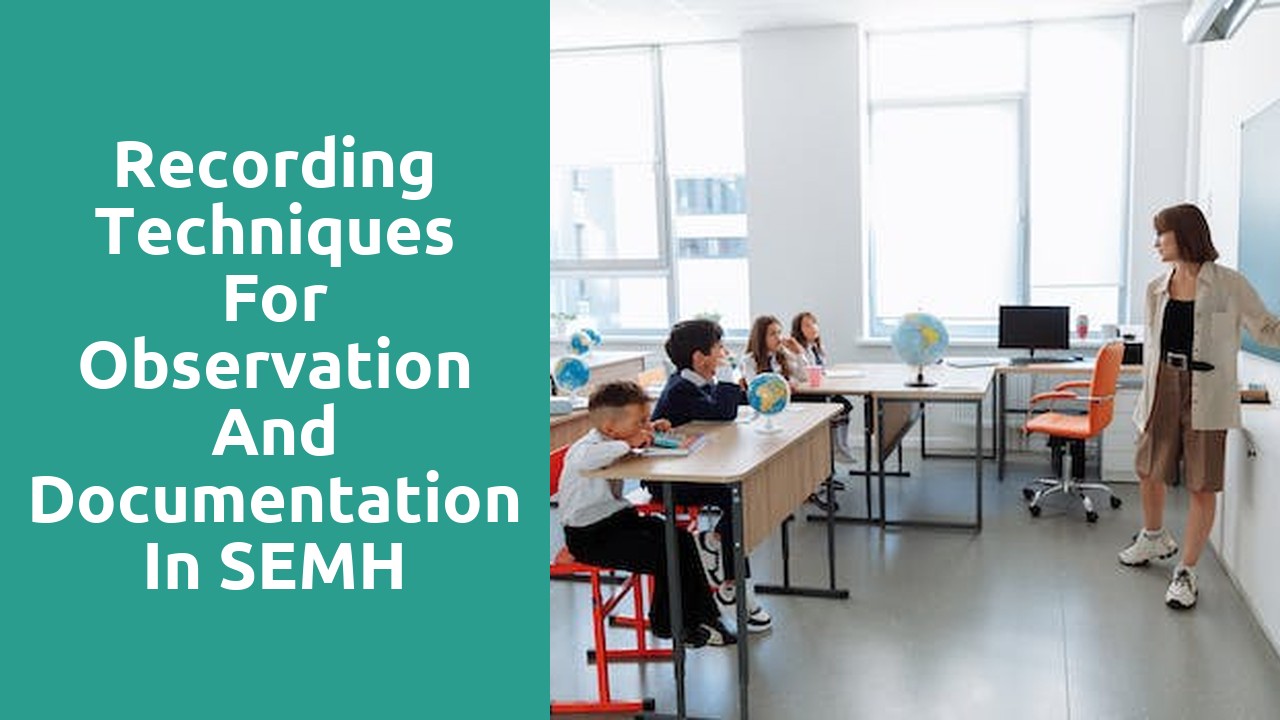

Observational methods have emerged as powerful tools in the assessment of students with social emotional and mental health (SEMH) needs. By observing students in their natural contexts, educators and professionals gain valuable insights into their behavior, social interactions, and emotional responses. This first-hand information acquired through observation allows for more accurate and comprehensive assessments, leading to more effective interventions and support.
One key advantage of observational methods is that they provide a holistic understanding of a student's SEMH needs. Traditional assessment methods, such as questionnaires or interviews, may be limited in capturing the complexity and nuances of a student's behavior and emotional state. Observational methods, on the other hand, offer a real-time view of how the student interacts with their environment, their peers, and authority figures. This comprehensive understanding allows educators and professionals to tailor interventions that are specific to the student's needs, leading to improved outcomes in their social, emotional, and academic development.
Capturing the essence of the student's behavior and emotions is crucial in conducting a comprehensive assessment for Social, Emotional, and Mental Health (SEMH). Effective recording techniques play a vital role in this process. Through accurate and detailed documentation, practitioners are able to capture the nuances of a student's behavior, providing valuable insights into their emotional well-being and identifying potential areas for intervention and support.
One essential recording technique in SEMH assessment is the use of descriptive language. Instead of relying on vague or generic terms, practitioners should strive to use specific and vivid language to paint a clear picture of the student's behaviors, emotions, and interactions. For example, instead of simply stating that a student was "aggressive," the practitioner can describe the intensity, duration, and context of the behavior, such as "the student exhibited intense verbal aggression towards peers during recess, lasting for approximately 10 minutes, resulting in physical altercations." This level of detail ensures that the assessment captures the true essence of the student's behavior, allowing for a more accurate understanding of their emotional state and needs.
Observation plays a vital role in the assessment of Social, Emotional, and Mental Health (SEMH) in individuals. However, for observation to be successful in capturing accurate and meaningful insights, effective documentation strategies are essential. The documentation process not only allows for a thorough record of observations but also ensures that the information gathered is organized and easily accessible for analysis and interpretation.
One key strategy for successful documentation in SEMH assessment is the use of clear and concise language. It is important to record observations using specific and descriptive words that accurately portray the behaviors and emotions exhibited by the individual. Care should be taken to avoid vague or subjective language that may introduce bias or misinterpretation. Additionally, documenting the context in which the observation took place, such as the setting, time, and individuals present, can provide crucial information for understanding the observed behaviors.
Observation plays a crucial role in conducting assessments of social, emotional, and mental health (SEMH). It is an art that requires a skilled approach to uncovering key insights about an individual's well-being and behavior. Through careful observation, practitioners can gain valuable information that may not be captured through traditional assessment methods alone.
One key aspect of effective observation is maintaining a non-judgmental and empathetic tone. It is essential to approach the process with an open mind, free from preconceived notions or biases. This allows the observer to truly see and understand the nuances of an individual's behavior, emotions, and interactions. A non-judgmental approach creates a safe and supportive environment for the individual being observed, which can facilitate more accurate insights into their SEMH challenges and strengths. By fostering an empathetic tone, observers can build rapport and trust with the individual, enabling a deeper understanding of their experiences and promoting a more comprehensive assessment of their SEMH.
One of the proven techniques for enhancing assessment accuracy in SEMH assessment is to ensure thorough and detailed documentation. This involves capturing and recording all relevant information in a systematic manner. By diligently documenting observations, behaviors, and responses, practitioners can ensure that the assessment process is both comprehensive and reliable.
Accurate documentation begins with clear and concise language. It is important to use specific and objective descriptions when recording observations. Avoiding vague or subjective terms helps to maintain the integrity of the assessment. Additionally, practitioners should aim to include as much detail as possible, including relevant contextual information. This can include the time, location, and any other pertinent factors that may have influenced the observed behaviors. By adhering to these principles of documentation, practitioners can greatly enhance the accuracy and validity of their SEMH assessments.
Exploring innovative approaches to recording in SEMH assessment can revolutionize the way we capture valuable insights and information. One such approach is the use of technology to enhance the recording process. With the advancements in mobile devices and applications, professionals can now utilize apps specifically designed for assessment purposes. These apps provide a user-friendly interface for recording observations, storing data, and even analyzing patterns and trends. By incorporating technology into our recording methods, we can streamline the process, ensure accuracy and consistency, and ultimately improve the overall quality of our assessments.
Another innovative approach to recording in SEMH assessment is the use of multimedia tools. Traditional methods of recording, such as handwritten notes or typed reports, may not always effectively capture the multiple dimensions of a student's behavior. However, by utilizing multimedia tools such as audio recordings, videos, or photographs, we can capture and document a more comprehensive picture of a student's actions, expressions, and interactions. These additional sensory cues can provide valuable context and support more accurate assessment and understanding. By embracing these innovative approaches to recording, we can unlock new possibilities for gathering data and gaining deep insights into the social, emotional, and mental health of students.